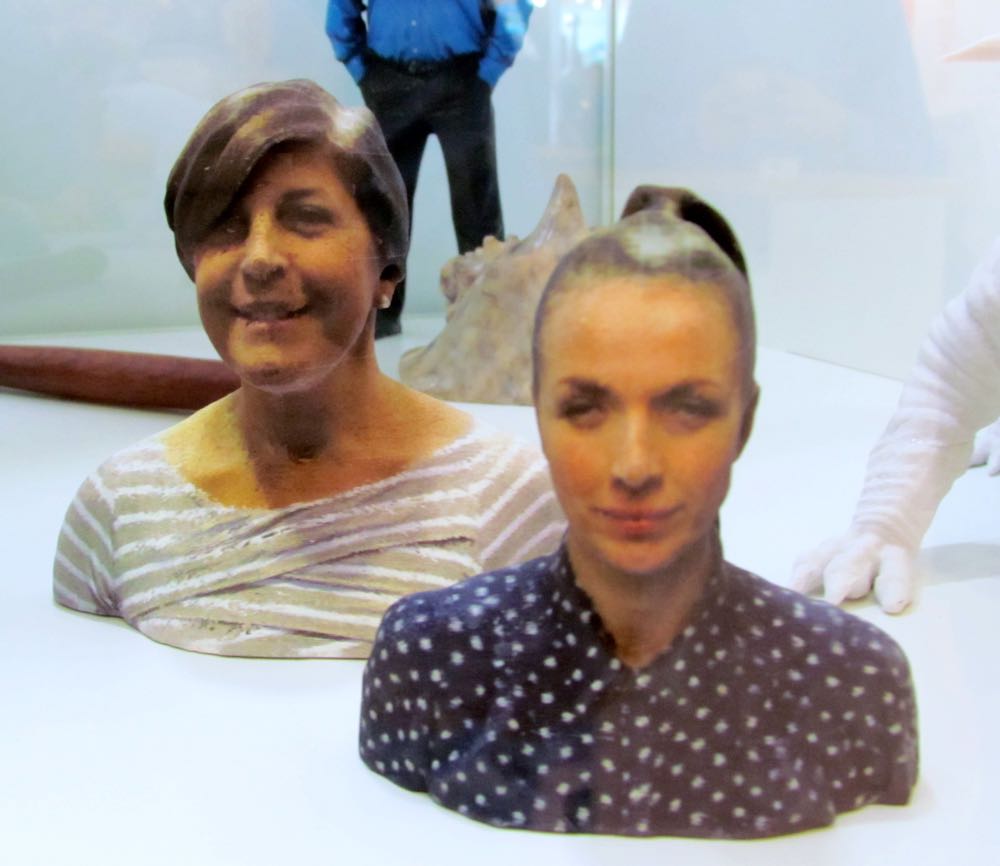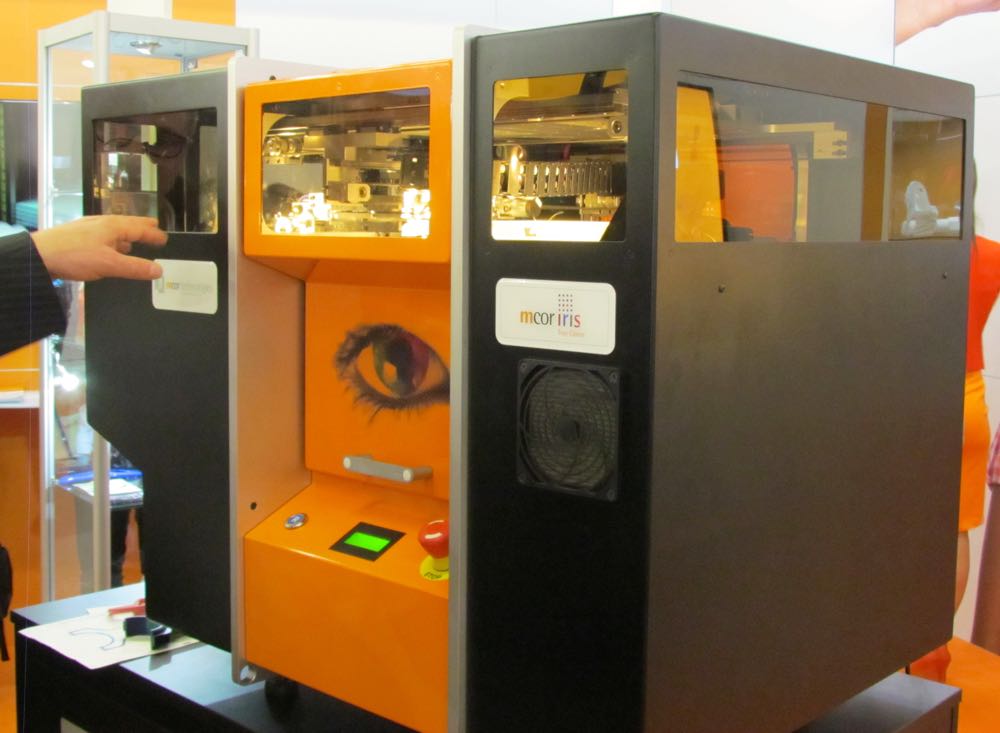For a few years now, MCOR Technologies has marketed a unique commercial 3D printer that uses paper. But what if they made one for personal use?
Their technology is now reasonably mature after having been developed for many years and has been applied to their flagship 3D printer, the Iris. It’s capable of 3D printing full RGB color objects at relatively low cost. How can they do this? By using plain old paper as the print material.
Each sheet is selectively sliced by a rapidly moving blade to create a “layer” of the final object. These are progressively cut and glued together to form an object. Finishing is accomplished by simply pulling off the unused paper sections. Color is created by pre-printing the paper sheets with inked outlines of each layer’s exterior surface by an embedded inkjet printer.
So far they’ve sold this technology only through their commercial units, which are targeted at professionals. The price of the Iris pictured here, for example, is around USD$40,000.
But what if they adapted this technology for personal use? What might that look like? How much could it cost?
Ideally, the printer would be smaller than the Iris, which is a 160Kg (350lbs) unit on a 150kg (330lbs) stand. This is far too large for a personal unit. We suspect, however, that MCOR could reduce the size and weight by simplifying some of the mechanics.
One method might be to eliminate the embedded inkjet printer that provides color. In a personal unit, this function could potentially be provided by the user, who no doubt already has such a device. It wouldn’t be reasonable for MCOR to shrink the size of the print volume, however, as that would require users to somehow pre-cut their standard paper sheafs.
Pricing of a desktop MCOR printer is an interesting question. It would have to be vastly less than their current model’s price, but could perhaps be more than current personal 3D printers because it offers full RGB-color printing capability. That’s a very rare feature in low-cost units. The only other unit of similar capability would be the 3D Systems CubeJet – announced way back last January but still not yet available. That machine was priced at USD$5,000.
Should the hypothetical MCOR device be priced at the same level? Perhaps not. The total cost of operation of the CubeJet is significant as it requires specialized powder and binder materials. Meanwhile, the MCOR desktop would require only inexpensive paper and glue. Thus, we suspect MCOR could charge more than USD$5,000 for such a machine – but not too much more.
We have no idea whether MCOR is preparing a desktop device, nor whether they’re even contemplating one. But if they did produce one, it would be a truly unique device in the personal 3D printer range.



